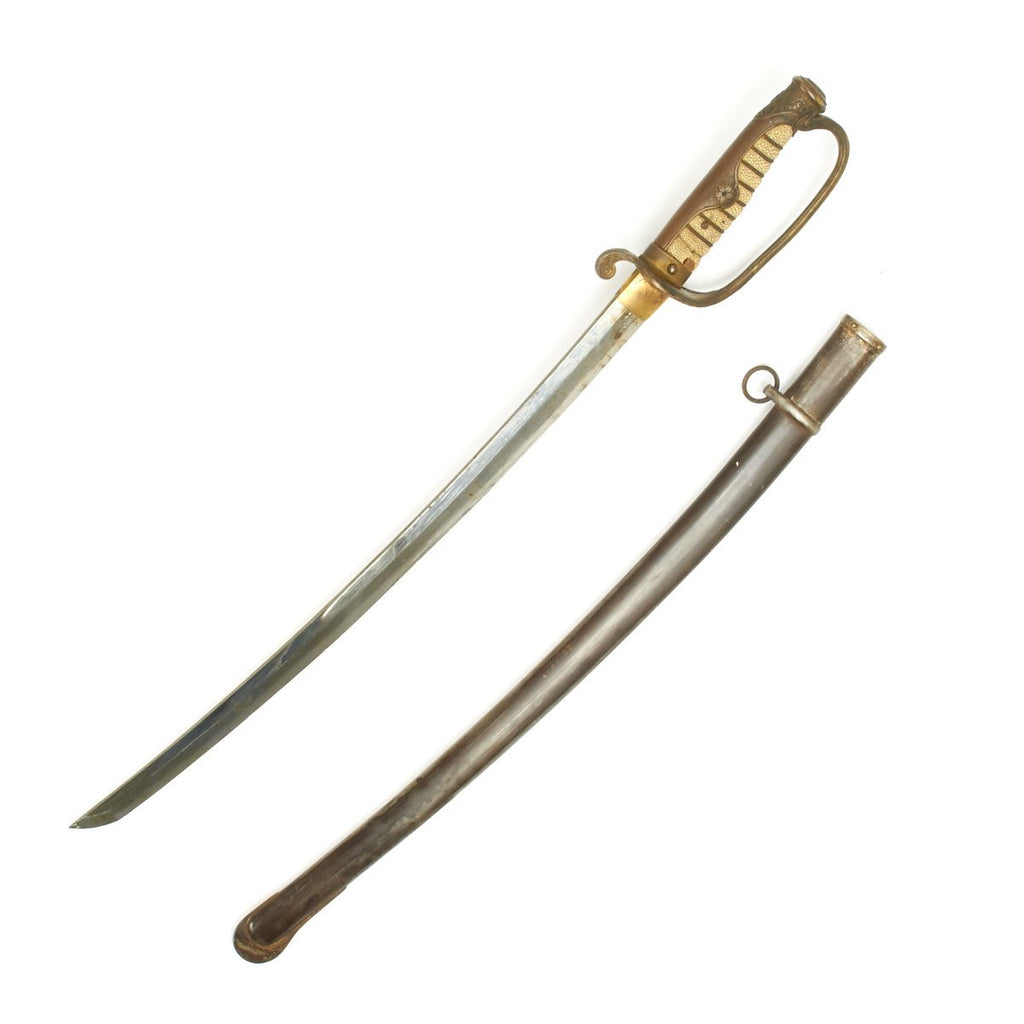Item Description
Original Item: Only One Available. The first standard sword of the Japanese military was known as the kyu gunto (旧軍刀, old military sword). Murata Tsuneyoshi (1838-1921), a Japanese general who previously made guns, started making what was probably the first mass-produced substitute for traditionally made samurai swords. These swords are referred to as "Murata-to" and they were used in both the Sino-Japanese war (1894-1895) and the Russo-Japanese war (1904-1905).
The kyu gunto was used from 1875 until 1934, it closely resembled European and American swords of the time, with a wraparound hand guard (also known as a D-Guard) and chrome plated scabbard (saya), the steel scabbard is said to have been introduced around 1900.
Kyu-gunto swords, also called Russo-Japanese swords, were used by Army, Cavalry and Naval officers during the Russo-Japanese War and WWII. This style of mounting was used from 1883 until 1945. Like shin-gunto, a great variety of quality in both blades, traditional and machine made, and mounts is seen in kyu-gunto swords. Many variations are found in the scabbards of kyu-gunto swords including chromed metal, lacquered wood or leather covered wood with brass fixtures. Any style scabbard may have a leather field cover. Those swords with elongated hilts and mekugi (peg for holding blade into hilt) are more likely to have hand forged blades, while the swords lacking mekugi generally are machine made and may have chromed blades.
This is a very fine example with an ancient hand-forged blade with a signed tang and Chrysanthemum (added later) and mekugi (peg for holding blade into hilt). The blade length measures 21 1/4" with a width of 1". The blade is in very good condition, and is extremely old. The tang (nakago) has three holes (mekugi-ana), indicating that the blade has been fitted to a hilt setting at least three times. The tang signature (mei) on the tang is partly missing due to the tang being shorted as part of the process of suriage, or blade shortening.
Folded steel blades were very labor intensive and expensive, so having an existing sword re-worked was much more economical. This also is what results in such an ancient blade being in a relatively modern scabbard setting, with the Chrysanthemum being added. The tang of this blade is somewhat worn, due to the cleaning that would have happened as part of the suriage. The blade also appears to have had some type of preservative applied to prevent rust, which has dried to the blade in some spots.
Still, clear grain is visible in the body of the blade, along with a wonderful temper line (hamon) extending the full length of the blade. The grip is excellent and while the scabbard is dent free, it has lost much of its chrome finish. A wonderful ancient blade made into an Army officer’s sword for a young soldier with his first commission.
- This product is available for international shipping.
- Eligible for all payments - Visa, Mastercard, Discover, AMEX, Paypal & Sezzle






























